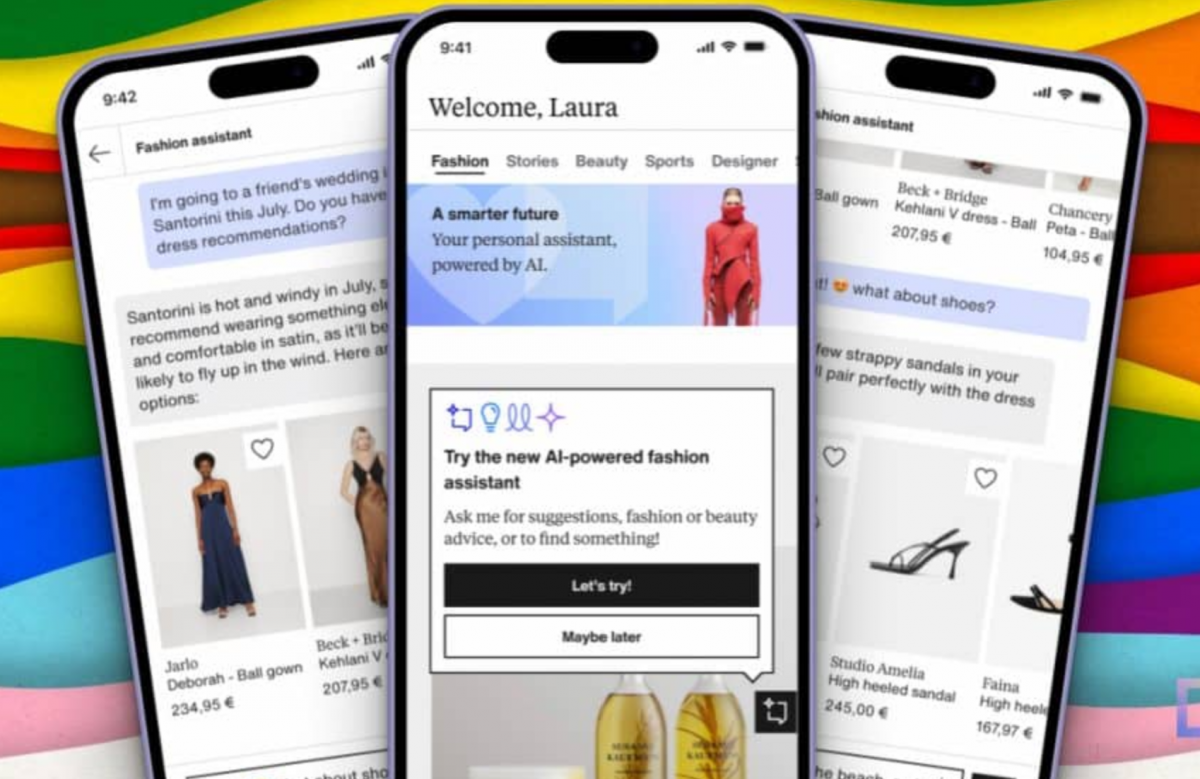The importance for fashion retailers to offer an online store in addition to classic brick-and-mortar stores is undeniable. Online shopping comes with benefits for both consumers and retailers. The main benefit for consumers is the convenience that comes with it. It is a lot easier to browse through a retailers offer, it goes by much quicker as there is no need to leave the house and there are no queues when eventually purchasing a product basket. Additionally, it makes price comparisons a lot easier and offers an opportunity to always find the best sales. On the retailer side, there is a huge potential to collect data on their customers and consequently a chance to get to know the customer and his preferences better (Borovkov, 2017). This is further reflected in the numbers. Globally speaking, around 21 percent of fashion sales are done through e-commerce transactions. Looking at Europe this number even jumps to 30 percent, nearly a third of all transactions (Statista, 2023).
However, this also shows that the majority of fashion purchases still happen offline, in the traditional brick-and-mortar stores. But why? If online shopping offers so many benefits. There are essentially two main reasons that keep the consumer demand for brick-and-mortar stores high and persistent. Firstly, consumers get the opportunity to try on and check the fit of clothes before purchase. Secondly, they are able to consult the store employees for fashion advice (Dunagan, 2024).
While AI has been integrated by fashion retailers a while ago in areas like data analytics, do recent AI developments have the potential to bury the existence of brick-and-mortar stores for good (Marr)? In 2023 Zalando, a major fashion e-commerce retailer from Germany, announced the launch of a ‘fashion assistant’ with the help of Generative AI. They partnered with OpenAI, the corporation behind ChatGPT, to offer their customers the opportunity to ask for fashion advice via their e-commerce platform. Consumers now get the chance to tell the platform about events they will be attending, a trend they are trying to jump on or ask for matching shoes to a dress they already own. The fashion assistant is then able to make suggestions for the consumer based on the input (Zalando, 2023). The emergence of such a technology makes the presence of employees in physical stores obsolete. One of the two reasons why consumers still tend to shop their clothes offline.
In my opinion this is the first stepping stone towards the end of brick-and-mortar stores. If in the future e-commerce retailers manage to pair these AI capabilities with technologies like Augmented Reality, which gives people the opportunity to try on clothes from home, there is more or less no incentive left for consumers to visit brick-and-mortar stores.
I am open to discuss this in the comments. What do you think are challenges to this advancement?
References
Tim Borovkov (April, 2017); ‘Importance of E-Commerce and online shopping and why to sell Online.’; Available:https://medium.com/@nyxonedigital/importance-of-e-commerce-and-online-shopping-and-why-to-sell-online-5a3fd8e6f416
Statista (2023); ‘Fashion e-commerce worldwide’; Available:https://www.statista.com/topics/9288/fashion-e-commerce-worldwide/#topicOverview
Judd Dunagan (July, 2024); ‘Online Shopping Vs. Offline Shopping. Trends and Future Development Predictions’; Available:https://www.linkedin.com/pulse/online-shopping-vs-offline-trends-future-development-judd-dunagan-75kze/
Bernard Marr; ‘The Amazing Ways Retail Giant Zalando Is Using Artificial Intelligence’; Available:https://bernardmarr.com/the-amazing-ways-retail-giant-zalando-is-using-artificial-intelligence/
Zalando Press (April, 2023); ‘Zalando to launch a fashion assistant powered by ChatGPT’; Available:https://corporate.zalando.com/en/technology/zalando-launch-fashion-assistant-powered-chatgpt


I really enjoyed reading your post, because I also prefer to shop online rather than in real life. A fashion assistant at Zalando does have the potential to revolutionize the shopping experience. However, this has the potential to take away the experiential aspects of shopping. Shopping in stores can have a social element, like shopping with your mom when you’re younger like I used to do. With the disappearance of brick-and-mortar stores we aren’t able to experience the feeling of the fabric anymore and even the feeling of happily walking out the store with your new purchases jacket. I think these are factors that are playing a significant role in consumer presences and is keeping in real life stores alive. I’d be interested in your thoughts on the challenges that e-commerce might face as it advances further with AR technologies.
Such a thoughtful piece. You’ve done an excellent job highlighting both the benefits of online shopping and the enduring appeal of brick-and-mortar stores. Love it!
Additionally, I concur that convenience significantly influences online shopping, and the incorporation of artificial intelligence, such as Zalando’s fashion assistant, undoubtedly introduces an additional dimension of personalization that may attract numerous consumers. Nevertheless, I question whether other elements might contribute to the continued existence of physical stores in light of these innovations. For example, the overall shopping experience—many individuals appreciate the social interaction of shopping with companions or the sensory experience of touching fabrics and trying on garments. Moreover, there’s a certain charm and brand identity that brick-and-mortar locations can provide, which might be hard to replicate online. Even with AR technology, I think there’s a level of trust and emotional connection that comes from interacting with a physical space and its employees. I’d love to hear your thoughts on how retailers might innovate to blend these experiences—perhaps creating hybrid models that combine the best of both worlds? How do you see the future of fashion retail evolving in that regard?